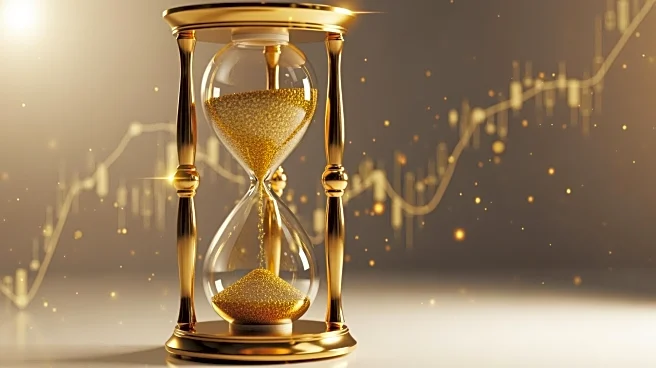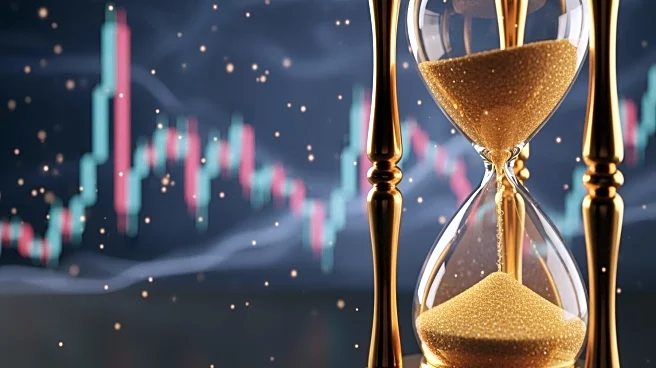What's Happening?
Gold prices rose over 1% to approximately $3,984 per ounce, recovering from a previous decline as investors shifted away from riskier assets. The increase in gold prices was supported by a modest rise
in U.S. private sector jobs, as reported by ADP, which slightly reduced the odds of further interest rate cuts. Despite the Federal Reserve's recent rate cut, Chair Powell indicated that another cut in December is not guaranteed, which has tempered gold's upward momentum near the $4,000 mark. The broader risk aversion in equity markets and a pause in the dollar's rally contributed to gold's appeal as a safe-haven asset.
Why It's Important?
Gold's price movement is a key indicator of investor sentiment and economic uncertainty. As a traditional safe-haven asset, gold often benefits from market volatility and risk aversion. The current rise in gold prices reflects concerns about the global economic outlook and the potential for further monetary policy adjustments. The demand for gold-backed ETFs and central bank purchases underscores the metal's role as a hedge against inflation and currency fluctuations. The ongoing volatility in gold prices may influence investment strategies and portfolio allocations.
What's Next?
Investors will continue to monitor economic data releases, particularly in light of the U.S. government shutdown, which has disrupted official data reporting. Private reports, such as ADP and PMI surveys, will gain importance in providing macroeconomic signals. The Federal Reserve's future policy decisions, including potential rate cuts, will also be closely watched for their impact on gold prices. Additionally, ETF flows and central bank activity will remain critical factors in determining gold's trajectory.











